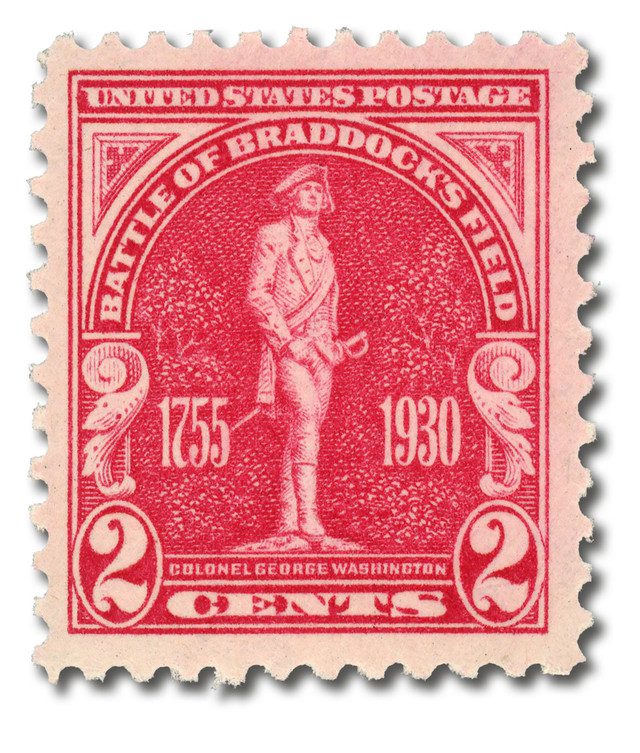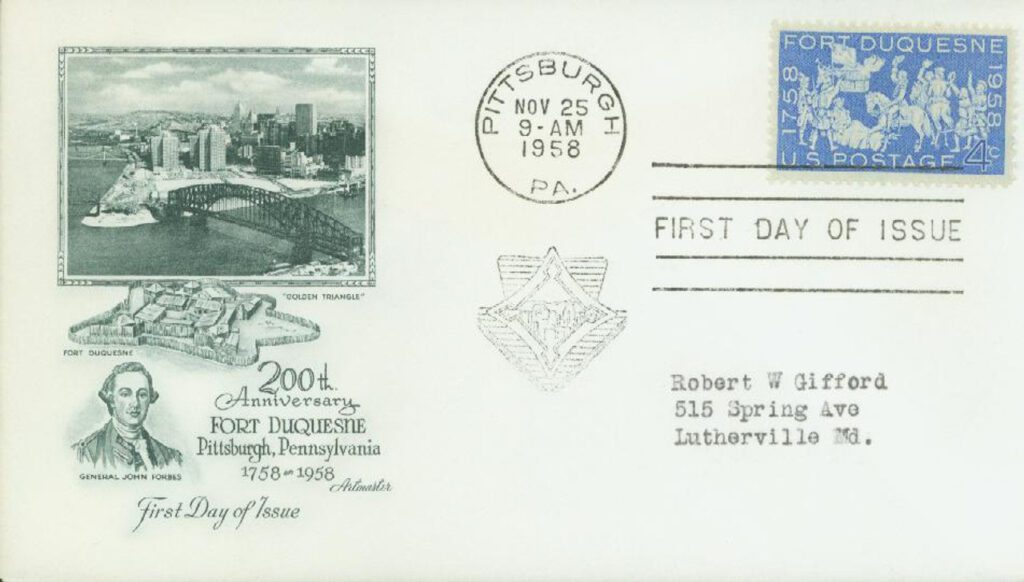On July 9, 1755, George Washington distinguished himself as a leader at the Battle of Braddock’s Field, also known as the Battle of the Monongahela.
While in his early 20s, George Washington joined the Virginia colonial militia. One of his assignments was to build a road through the dense forests of Maryland to Pennsylvania, to set up an encampment, find water routes into the Ohio Valley, and await reinforcements. Following a skirmish with French troops that threatened to evolve into full-scale war, Washington and his men built a log stronghold named Fort Necessity.
On July 3, 1754, the French attacked Fort Necessity, firing the opening shots of the French and Indian War. Outnumbered three to one, Washington’s men were forced to surrender. The defeat was the only surrender of his military career.
In 1755, Washington volunteered to act as British General Edward Braddock’s confidential assistant as he launched a campaign to retake the Ohio Valley from the French. Its purpose was to capture the French stronghold of Fort Duquesne in Pennsylvania and push north to Fort Niagara. However, Braddock failed to recruit Native American scouts and found that the road was too narrow and constantly needed to be widened to move artillery and supply wagons. He decided to split his army in two, sending a flying column ahead with the slower force of cannons and wagons remaining behind.
Braddock’s 1,300-man flying column crossed the Monongahela River on July 9, 1755, placing them about 10 miles from Fort Duquesne. The men expected an easy victory as the fort was lightly defended. However, the fort had recently received French, Canadian, and Native American reinforcements. The Canadian commander of the fort received word of the approaching British and sent out about 800 troops and Native American warriors for an ambush. The British saw the ambush party hiding in the tree and opened fire, quickly killing a French captain. While most of the French began to flee, the Native Americans who were used to hunting on these grounds were unconcerned. As they fought, the natives let out a terrifying “whoop” call and would nail the scalps of those they defeated to the trees, leading the British to panic.
Coming under heavy fire, this British advance guard began to withdraw. However, the slower force had sped up their advance when they heard gunfire, encountering them on the narrow road and blocking the retreat. Though the British far outnumbered their attackers, they were on the defensive. The men were not used to fighting in the woods and were so confused they frequently fired on each other. As his men descended in chaos, Braddock rode to the front to rally his men. Some of his commanders followed suit and the troops held their ground. Several horses were shot out from under Braddock before he was shot in the lung.
As Braddock was carried away, the British had no leader and began to withdraw to the Monongahela River. There they came under attack from Native Americans with hatchets and scalping knives. The British feared a massacre. But then Colonel Washington, despite having no official command, helped the men calm down and establish order. He then organized and evacuated the men.
Although the British were defeated, with more than a third killed and another third wounded, Washington distinguished himself and became known as the “Hero of the Monongahela.” His reputation was known as far away as London, and the British governor of Virginia appointed him commander in chief of the state’s colonial militia. However, Washington became frustrated by the British military’s lack of respect for the colonists’ service. He resigned his commission three years later in favor of civilian life.
The battle of Braddock’s Field featured several commanders besides Washington who would become prominent in the American Revolution: General Thomas Gage went on to become the British commander-in-chief at the beginning of the Revolution, Horatio Gates was a Colonial Army general who commanded American forces at the Battle of Saratoga, and Charles Lee became a major general in the Colonial Army.
| FREE printable This Day in History album pages Download a PDF of today’s article. Get a binder or other supplies to create your This Day in History album. |
Discover what else happened on This Day in History.





